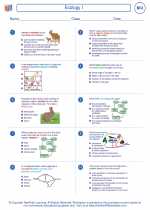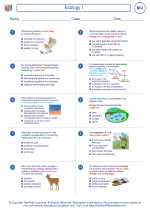Seasons
Seasons are the result of the Earth's axial tilt and its orbit around the sun. The Earth's axis is tilted at an angle of approximately 23.5 degrees relative to its orbit around the sun. This tilt causes different parts of the Earth to receive varying amounts of sunlight at different times of the year, leading to the four seasons: spring, summer, autumn, and winter.
Causes of Seasons:
- Earth's Tilt: The tilt of the Earth's axis causes different parts of the Earth to receive varying amounts of sunlight throughout the year.
- Orbit around the Sun: As the Earth orbits the sun, the angle of sunlight changes, leading to the different seasons.
Effects of Seasons:
The changing seasons have various effects on the environment, including temperature changes, precipitation patterns, and plant and animal behavior.
Study Guide:
Here are some key concepts to understand about seasons:
- Earth's Tilt: Why does the Earth's tilt cause different seasons in different hemispheres?
- Seasonal Changes: What are the typical characteristics of each season, and how do they vary based on location?
- Impact on Living Organisms: How do seasonal changes affect the behavior and adaptations of plants and animals?
- Historical and Cultural Significance: How have seasons influenced human cultures, traditions, and activities?
Understanding the causes and effects of seasons is crucial for comprehending various ecological and environmental phenomena, as well as for appreciating the natural rhythms of the Earth.
Hope this helps!
.◂Biology Worksheets and Study Guides High School. Ecology I

 Worksheet/Answer key
Worksheet/Answer key
 Worksheet/Answer key
Worksheet/Answer key
 Worksheet/Answer key
Worksheet/Answer key
 Vocabulary/Answer key
Vocabulary/Answer key
 Vocabulary/Answer key
Vocabulary/Answer key
